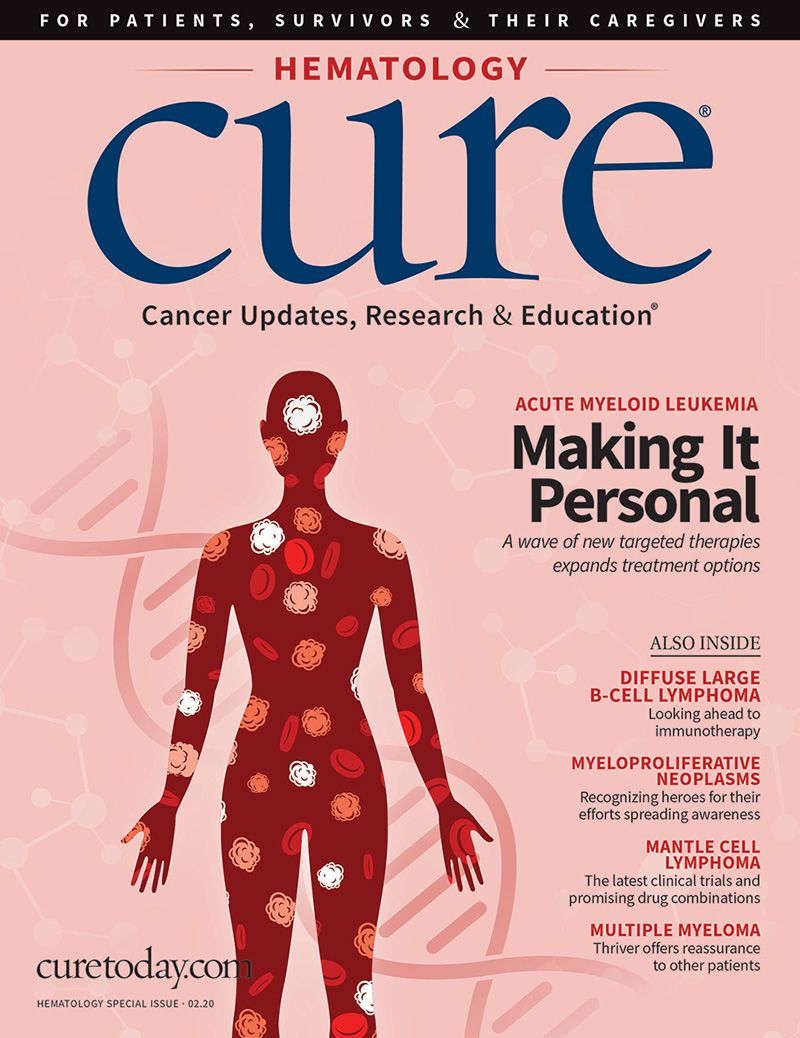Overcoming Multiple Myeloma Takes One Patient to New Heights
Terry White, who has lived with multiple myeloma for more than a decade, offers reassurance to other patients.
In 2009, hip pain sent Terry White to his doctor, who discovered a tumor on White’s pelvic bone. After being treated with radiation, White was told that he would likely develop multiple myeloma, a blood cancer that affects the plasma cells.
Later that year, another tumor appeared, and White received a cancer diagnosis. Since then, the resident of Juneau, Alaska, has climbed Mount Kilimanjaro and trekked to Patagonia with the Moving Mountains for Multiple Myeloma program. He is also active in the search for a cure for the disease that affects more than 32,000 men and women each year in the United States.
White served as the keynote speaker during CURE®’s first multiple myeloma patient-focused sessions on Dec. 14, 2019. In an interview, he discussed living with cancer, offered advice to other patients and shared the song that got him through difficult days.
CURE®: You have lived with multiple myeloma for more than 10 years. How has the disease changed your life?
White: You learn to appreciate the smaller things that you (might otherwise) take for granted ... like waking up every day and knowing you have another day. So far, I’m 100% at getting through bad days. There were times early on after my diagnosis where I was just like “Wow, I can’t imagine doing this forever.”
There are some low points that you go through, and as the years go by, the further you can get it to the back of your mind, the easier it is, (at least) for me. It’s a new normal living with cancer, but it’s still living.
Do you remain on treatment today? If so, do you experience any side effects?
I’m still doing maintenance chemotherapy and am on Revlimid (lenalidomide). I’ve been fortunate that it has kept me in remission and with tolerable side effects. (I’ve had) fatigue, but
you learn to live with it. It’s OK to take a nap — I quickly learned that. Listen to your body. When I first started (treatment), GI (gastrointestinal) side effects were an issue. I was on no rest period, and I spoke with my oncologist and asked what we could do. And so, we tried a rest period after about five years, and it seemed to help.
You gave the keynote address at CURE®’s patient-focused sessions on multiple myeloma. What do you hope other patients took away from your speech?
Having multiple myeloma is like climbing a mountain every day. The message that I presented was: Just because you have cancer doesn’t mean you have to stop living. There’s a lot of work to be done. I encourage people to get active, go to support groups and help other people. When I find out that someone I know has been diagnosed with cancer, because I’m in the club, it’s very easy for me to pick up the phone and say “Hey, what’s going on?” That’s the thing that I appreciate ... I’m able to do that. People want help. We just don’t know how to do so because we don’t know what’s going through their minds.
Do you try to live by a particular quote or philosophy?
I remember one of the first myeloma patients that I met on a message board. He passed away many years ago. He was great at giving advice to the newly diagnosed. One of the things I remember from him was: “Don’t borrow tomorrow’s troubles today.” I try to live by
that, but sometimes it’s hard.
There’s also a song by Bob Marley — it’s called “Three Little Birds.” It goes ‘Cause every little thing gonna be all right.” That was my theme song on the many trips I made back and forth from Juneau to Seattle for this test and that test and coming back for results. It seems like all the tests took about a week. Music is my therapy, and I get a lot of peace from it.
